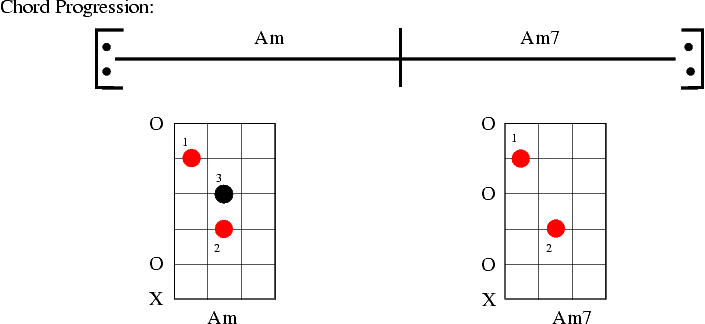3. Getting Started.
The first progression is very simple, and aimed at showing you the concept of how pivot tones work. Here we see Am (pronounced "A minor") and Am7. (Pronounced "A minor 7"). The red dots indicate the pivot tones. You should take great care not to lift or otherwise move these fingers when changing from chord to chord.
 |
|

In this example, there are two pivot notes. One on the 'B' string, and one on the 'D' string. The only finger that moves is your third (ring) finger. In this case, it's not moving from one chord tone to another. It is just being placed on (A minor) and off (Am7) the fretboard.
Remember, each chord gets played four times evenly. Always strum downward. Repeat the progression many times until you feel more comfortable with the changes. (The double dots at each end indicate that you should repeat the chord progression more than once.)